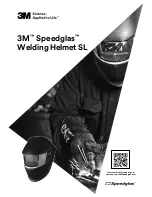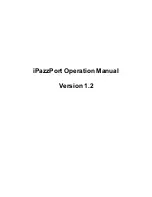tinb60e1 (2020-07)
37
5
Using the gauge with different gases
A thermal conductivity gauge senses heat loss which depends
on the thermal conductivity of the gas surrounding the sensor.
Since different gases, and mixtures, have different thermal con-
ductivities, the indicated pressure readings and outputs will also
be different. INFICON convection gauges (and most other ther-
mal conductivity gauges) are calibrated using nitrogen (N
2
).
When a gas other than N
2
/ air is used, correction must be made
for the difference in thermal conductivity between nitrogen (N
2
)
and the gas in use. The charts and tables on the following pages
indicate how different gases affect the display and output from
an INFICON convection gauge.
WARNING!
Using a thermal conductivity gauge with
gases other than that for which it is calibrated could result in
death or serious injury. Be sure to use gas correction data in this
manual when measuring pressures of gases other than N
2
/ air.
For N
2
the calibration shows excellent agreement between in-
dicated and true pressure throughout the range from 10
-4
to
1000 Torr. At pressures below 1 Torr, the calibration curves for
the different gases are similar. The difference in readings at
these low pressures is a constant, a function of the difference
between thermal conductivities of the gases.
At pressures above 1 Torr, indicated pressure readings may
diverge significantly. At these higher pressures convection
currents in the gauge become the predominant cause of heat
loss from the sensor and calibration depends on gauge tube
geometry and mounting position as well as gas properties.
Generally, air and N
2
are considered the same with respect to
thermal conductivity, but even N
2
and air will exhibit slight differ-
ences in readings at higher pressures. For example, when vent-
ing a system to atmosphere using N
2
, you may see readings
change by 30 to 40 Torr after the chamber is opened and air
gradually displaces the N
2
in the gauge. For most other gases
the effect is much more significant and may result in a hazard-
ous condition as described below.
Summary of Contents for 3PE5-001-B7HZ
Page 79: ...tinb60e1 2020 07 79 Notes...


















